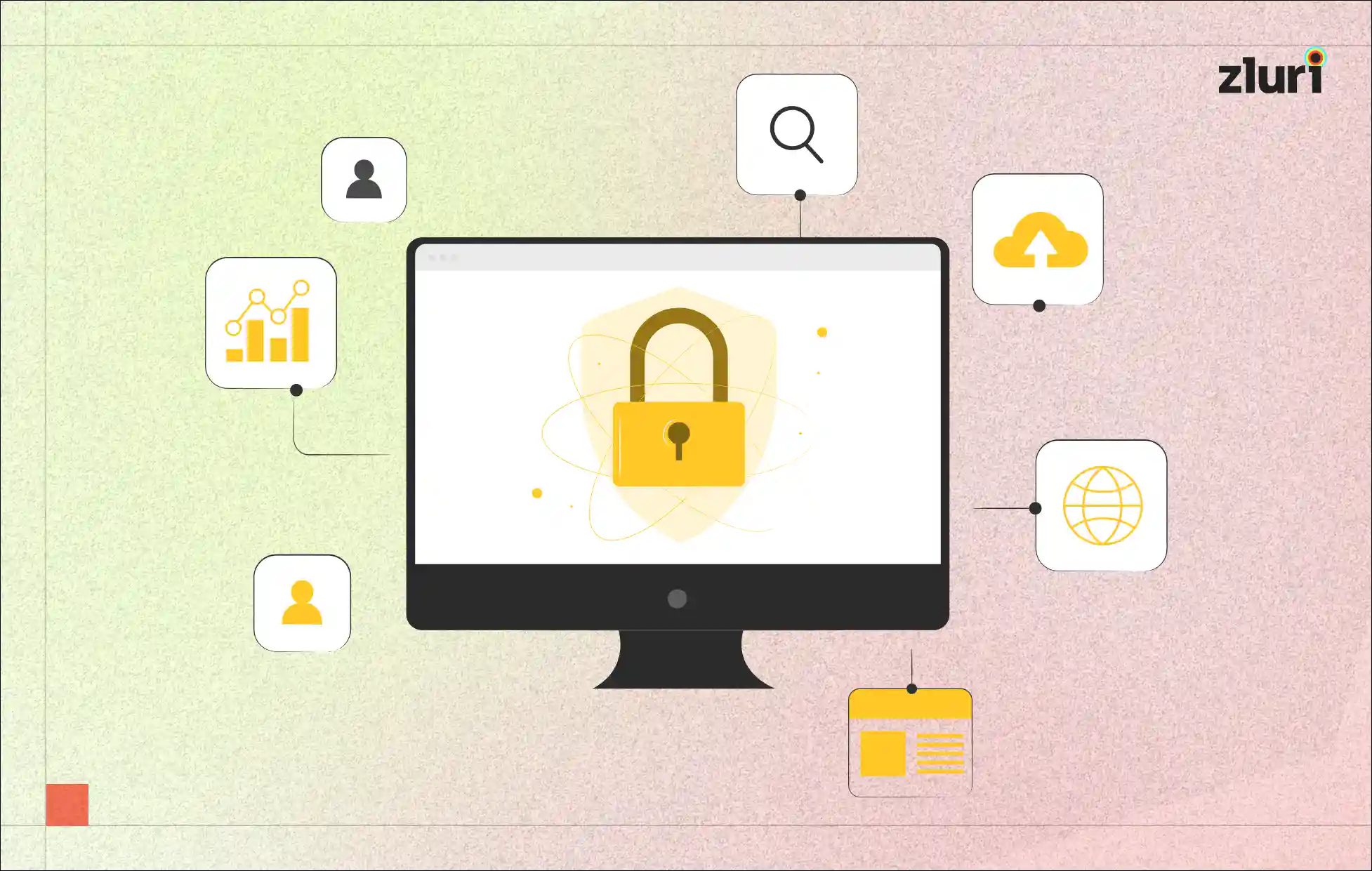Managing access rights in extensive IT environments is crucial for streamlined control over user permissions. Role-based access control provides clarity and simplicity by grouping individuals based on their organizational roles. This approach is essential for meeting the workforce's diverse needs, including employees and third-party contractors requiring similar access rights for their tasks.
The significance of role-based access control (RBAC) becomes evident when considering the potential consequences of inadequate access management.
Without proper control and automated provisioning, organizations face delays in onboarding new personnel and the risk of granting inappropriate system access.
Furthermore, the lack of automated deprovisioning may lead to employees retaining access rights even after role changes or departure, threatening the company's overall security profile. Adopting role-based access control is not just a matter of convenience; it's a strategic imperative to safeguard organizational efficiency and security. Let's delve into the intricacies of role-based access control.
What is Role-Based Access Control (RBAC)?
Role-Based Access Control is a sophisticated authorization system designed to govern system and data access by associating permissions with individual organizational roles. The roles are tailored to reflect the user's hierarchical position and department within the organizational structure.
RBAC provides a dual-layered approach to access restriction through data authorization and feature authorization. Data authorization grants users access to specific application features while imposing constraints on their data manipulation—encompassing actions such as accessing, creating, deleting, and modifying data.
In contrast, feature authorization restricts a user's access to a defined set of features within an application, enhancing precision in access control.
Operating on the security principle of least privilege, RBAC ensures that each user is granted only the minimum permissions essential for their job functions. This principle entails users having the least possible privilege necessary to execute tasks, such as using applications, monitoring job statuses, and managing files (creating, deleting, modifying, printing, etc.).
In the contemporary landscape of cloud-based businesses, effective management of SaaS licenses, coupled with robust identity, access, and user management, becomes imperative. Incorporating RBAC into this framework significantly enhances overall security measures.
RBAC's core objective is to regulate resource access, and as a result, organizations heavily rely on authentication and authorization mechanisms based on login credentials. This strategic approach minimizes the risks associated with potential malicious users, reinforcing the organization's overall security posture.
Benefits of Role-based Access Control
By aligning access rights with predefined roles and responsibilities, RBAC presents a multitude of benefits:
- Mitigate Security Risks through Separation of Duties: RBAC ensures a robust defense against potential security breaches by Separation of Duties. With distinct roles, the impact of a breach is limited, as hackers are confined to the specific resources assigned to compromised accounts. This separation of duties acts as a proactive defense mechanism.
- Streamline Operations and Enhance Efficiency: The administration process is significantly simplified with RBAC, leading to enhanced operational efficiency. The streamlined approach to assigning and managing access permissions allows for quick adaptation to changes in roles. This flexibility extends across diverse operating systems, platforms, and applications, benefiting both internal and third-party users, including those requiring temporary access.
- Facilitate Compliance Adherence: RBAC plays a pivotal role in aiding organizations in complying with various data protection and privacy regulations. Access restrictions imposed by RBAC contribute to meeting compliance requirements, while automated role-based access reduces the likelihood of human errors that could inadvertently expose sensitive data.
- Optimize Administrative Time and Resource Utilization: By reducing the administrative burden associated with user permissions, RBAC liberates valuable time for administrators. This, in turn, enables them to focus on higher-value tasks. Additionally, limiting access to specific processes and applications optimizes resource utilization, including network bandwidth, memory, and storage.
- Enhance Visibility and Oversight: RBAC provides network administrators and managers with heightened visibility into operations and user activities. It enables monitoring of resource access, ensuring compliance and adherence to security protocols. This increased oversight contributes to a more secure and controlled environment.
- Implement Zero Trust Security: RBAC aligns with the zero-trust security approach by enforcing the principle of least privilege. Restricting access permissions based on roles significantly diminishes the risk of breaches and data leakage. This proactive security stance is crucial in safeguarding organizational assets in an increasingly complex threat landscape.
Types of Roles associated with RBAC

Roles within an organization can be assigned to team members based on their functions, seniority, and department. Let us now explore the types of roles under RBAC along with the level of authorization they have:
- Analysts- Analysts have access to all the data to make their reports and find insights. However, they can't perform any actions inside the apps.
- User- The user's role is to use the product to perform their core job. They can perform the basic functions but aren't authorized to make organization-wide changes or access any financial details.
- Billing admin- The billing admin can access the financial details and manage team payments and plans. However, the individual has no visibility into any team elements and can't perform any tasks or add or remove users from an app.
- IT System Admin- The IT admin has access to all the details of the corporate and users' info. The admin can manage groups, team settings, and team members altogether. They can give or revoke access to applications to other users.
- Super admin- They have access to all the data, features and can make all the possible changes in an app. The role can perform all actions that billing, admin, community manager, and developer roles can do.
The super admin can manage anything and almost everything within a team, including team settings, groups, members, and resources, to name a few. They can also perform all the actions on each of the public, team, or private workspaces and the elements they have within the team.
Major Challenges Associated with RBAC
Role-Based Access Control comes with its set of challenges. Let's delve deeper into the mentioned challenges:
- Role Explosion: The risk of role explosion arises when the granularity required for access control leads to an extensive proliferation of roles. This can result in a complex matrix of roles, making it challenging to manage and comprehend. Complications in access control can decrease the effectiveness of RBAC, and administrators may struggle to maintain and update the roles efficiently.
- Security Risk Tolerance: RBAC might not be suitable for organizations with a highly reactive approach to security risks. Some organizations require more dynamic and fine-grained access control mechanisms that can adapt swiftly to changing security postures. In environments where security risks are continuously evolving, RBAC might not provide the agility needed to respond quickly to new threats and vulnerabilities.
- Scaling Issues: RBAC may face scalability challenges, particularly in large organizations or those with complex structures. Implementing RBAC on a significant scale can be demanding without a robust Identity and Access Management (IAM) tool in place. Without proper scaling mechanisms, RBAC might become cumbersome to manage and might not efficiently handle the diverse access requirements of a large and dynamic organization.
Top Role-Based Access Control Examples
Consider a scenario where a temporary consultant is engaged to provide advice on enhancing a company's software engineering work processes. In RBAC, the IT department strategically creates a specific role tailored for the consultant. This role is meticulously designed to grant access only to essential tools such as GitHub and AWS while restricting access to other sensitive areas.
Marketing Role:
- Employees in the marketing department possess access to specific platforms like Facebook Ads, Google Analytics, and Google Ads.
- This focused user access enables marketing professionals to carry out their responsibilities efficiently without compromising unrelated areas.
Finance Role:
- Individuals in the finance department are granted access to financial management tools like Xero and essential spreadsheets containing detailed company income and expenditure information.
- RBAC ensures that financial data is only accessible to authorized personnel, enhancing data security.
Human Resources Role:
- HR employees can access HR-specific tools like Workday and other similar human resource management platforms.
- In this context, RBAC streamlines HR processes while maintaining the confidentiality of sensitive employee information.
Executive Leadership Role:
- Executives have access to strategic planning tools, financial reports, and executive dashboards.
- RBAC ensures that top-level decision-makers can access critical information while maintaining confidentiality.
Legal and Compliance Role:
- Legal and compliance officers are granted access to legal databases, compliance management systems, compliance automation solutions and documentation repositories.
- RBAC ensures that legal and compliance activities are carried out precisely and adhere to regulations.
The Top 5 RBAC Implementation Best Practices
To optimize the advantages of RBAC, adhering to the following RBAC implementation best practices is essential:
Assess Current Business Needs
Commence the RBAC implementation process by comprehensively evaluating the organization's needs. This assessment should encompass various aspects such as job roles, software utilization patterns, regulatory mandates, and specific audit prerequisites pertinent to the industry.
Foster collaboration across different departments to understand the organization's operational landscape holistically.
Set Proper Roles & Responsibilities
Establishing roles and responsibilities within an organization is crucial for ensuring clarity and efficiency in operations. This involves defining duties for every individual involved, whether employees, consultants, advisors, or third-party vendors. By delineating these roles, the organization can effectively allocate tasks and resources.
Additionally, determining the appropriate access levels for each role ensures that individuals have the necessary permissions to fulfill their responsibilities without compromising security or data integrity. This structured approach fosters accountability, streamlines workflows, and contributes to overall organizational success.
Integrating RBAC Implementation Across Systems
Developing a phased rollout plan is essential to implement RBAC across all systems. This approach minimizes disruptions while gradually incorporating RBAC into various facets of the organization's infrastructure.
Initiating sensitive data and critical programs allows for a focused and prioritized implementation process. As the rollout progresses, the scope can expand to encompass broader company resources, ensuring comprehensive coverage.
Enhancing Security Through RBAC Audit Roles
Audit roles involve the ongoing process of reviewing and refining the role-based access control system to ensure it remains aligned with evolving organizational requirements and security challenges. This entails conducting regular user access review audits to evaluate the organization's RBAC implementation, integration, and utilization efficiency.
These audits may involve engaging independent auditors to provide impartial evaluations, enhancing the credibility and thoroughness of the assessment process. By continuously assessing RBAC effectiveness, organizations can proactively identify and address any weaknesses or gaps, thereby bolstering overall security posture and mitigating potential risks.
Implement an Access Management Solution
One of the crucial best practices in ensuring that users have access only to what is essential for their roles and responsibilities is proper user access management. Zluri, for example, offers robust access management features that enable IT teams to enforce strict access control policies based on role-based access control.
With Zluri's access management features, your teams can precisely define and assign permissions to individual users based on their roles within the organization. This means employees are granted access to specific business applications, data, and systems necessary to perform their job functions effectively while unauthorized access attempts and insider threats are mitigated.
By implementing RBAC through Zluri's access management platform, IT teams can streamline access provisioning and ensure that each user has the appropriate levels of access tailored to their job responsibilities. This user access management procedure enhances security and improves operational efficiency by minimizing the risk of data breaches and unauthorized activities.
Book a demo now to learn more about Zluri's access management offerings.
Major Alternative Access Control Systems to RBAC
While RBAC is widely adopted for its effectiveness in managing user permissions, several alternative types of access control mechanisms offer different approaches to access management. Let's explore how these mechanisms differ from RBAC:
Attribute-Based Access Control (ABAC):
- ABAC (attribute-based access control) evaluates access requests based on attributes associated with users, resources, and environmental conditions.
- Unlike RBAC, which primarily relies on roles, ABAC considers a broader range of attributes such as user attributes (e.g., department, location), resource attributes (e.g., sensitivity level), and context attributes (e.g., time of access).
- ABAC offers more dynamic and context-aware access control, allowing organizations to adapt access policies based on changing conditions.
Mandatory Access Control (MAC):
- MAC (Mandatory access control) enforces access control policies defined by system administrators or security policies.
- Unlike RBAC's role-based approach, MAC assigns labels or security classifications to users and resources.
- Access decisions in MAC are based on the sensitivity or classification level of data and the security clearance of users rather than their roles or job responsibilities.
Permission-Based Access Control (PBAC):
- PBAC, or Permission-Based Access Control, allows for both fine-grained and coarse-grained control over access permissions. This granular level is not entirely achievable with RBAC.
- PBAC supports environmental and contextual controls, enabling policies to grant access to resources based on specific conditions such as time and location. RBAC typically lacks this level of flexibility.
- PBAC offers transparency and visibility into the relationship between resources and identities. This visibility aids in understanding access patterns and is crucial for establishing a robust access management policy.
Discretionary Access Control (DAC):
- DAC (Discretionary access control) grants access rights based on the discretion of the data owner.
- Unlike RBAC, where predefined roles determine access, DAC allows users to control access to their own resources.
- Users have the flexibility to assign permissions to specific individuals or groups, often resulting in more granular control over access rights.
The Strength & Significance of Role-Based Access Control in Modern Security Environments
Role-Based Access Control remains a foundational and widely adopted access control mechanism for organizations seeking to manage user permissions effectively. By aligning access rights with predefined roles and responsibilities, RBAC enhances security, simplifies access management, and improves compliance with regulatory requirements.
Its structured approach streamlines administrative tasks, reduces the risk of unauthorized access, and promotes operational efficiency. As organizations continue to evolve and face increasingly complex security challenges, RBAC stands as a proven method for maintaining a secure and well-managed access control environment.
FAQs
1. What is role-based access control with examples?
Role-Based Access Control (RBAC) is a method of access control that assigns permissions to users based on their roles within an organization. Rather than assigning permissions directly to individual users, permissions are associated with specific roles, and users are assigned to these roles.
For example, in a healthcare setting, roles such as \"doctor,\" \"nurse,\" and \"administrator\" may have distinct sets of permissions. A doctor might have access to patient records and the ability to prescribe medication, while a nurse may only have access to patient records for monitoring purposes.
2. What is the principle of RBAC?
The principle of RBAC is to align access rights with predefined roles and responsibilities within an organization. This means that access to resources is granted based on a user's role rather than their identity or other factors.
By defining roles and assigning permissions accordingly, RBAC helps ensure that users have access to the resources they need to perform their job functions, reducing the risk of unauthorized access.
3. What are the functions of RBAC?
RBAC performs several key functions, including:
- Role Definition: Identifying and defining the roles within an organization, along with the corresponding permissions associated with each role.
- Role Assignment: Assigning users to specific roles based on their job responsibilities or other relevant factors.
- Role Authorization: Granting or revoking access permissions based on an individual's role within the organization.
- Role Management: Managing and maintaining roles over time, including adding new roles, modifying existing roles, and removing outdated roles.
4. What is position-based access control?
Position-Based Access Control (PBAC) is a variation of access control where access rights are assigned based on an individual's position or job title within an organization.
Unlike RBAC, which focuses on roles and responsibilities, PBAC assigns permissions based on hierarchical positions within the organizational structure. For example, a manager may have access to certain resources based on their position within the company, regardless of their specific role or responsibilities.









.svg)














